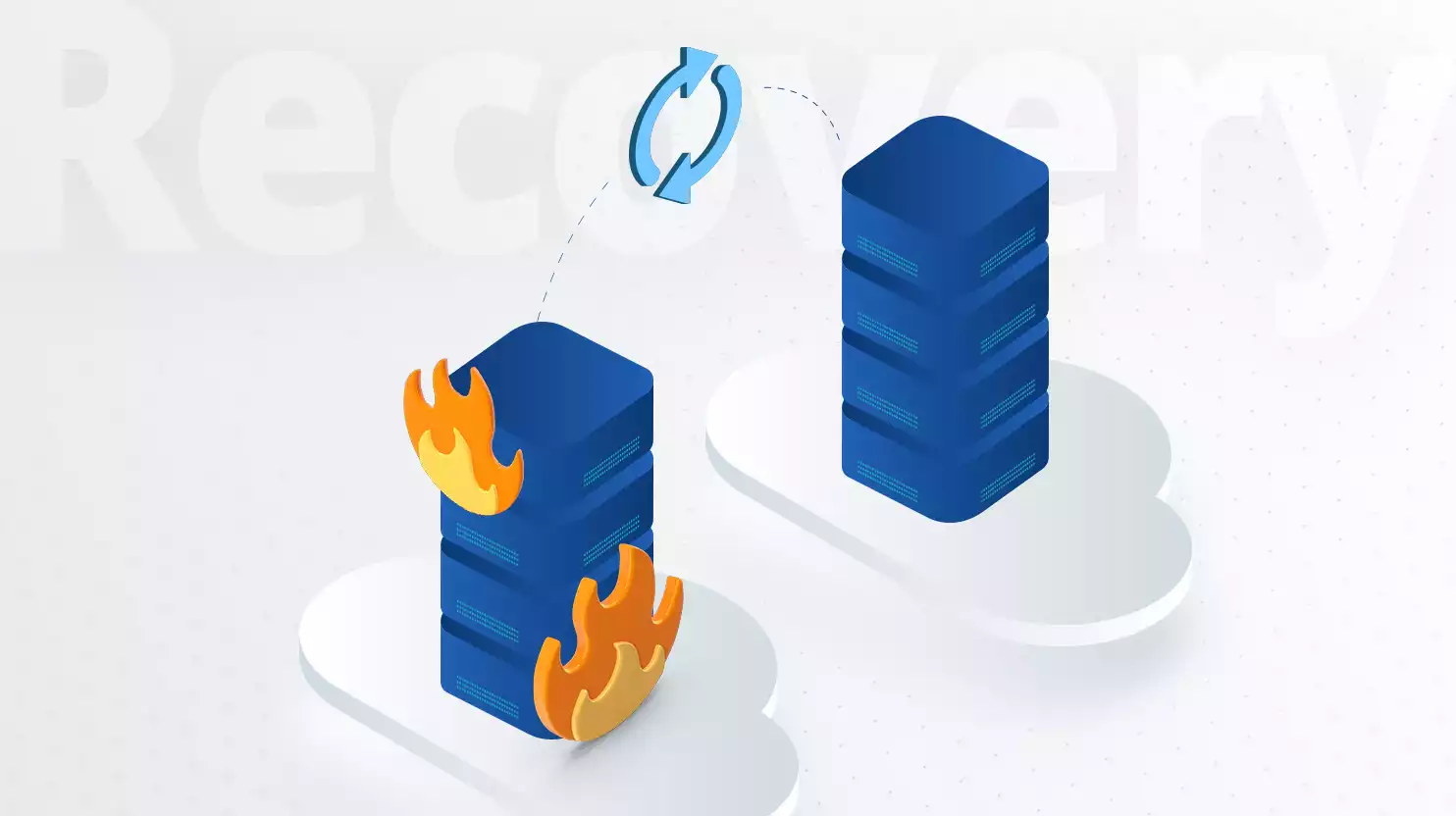What is disaster recovery?
Disaster Recovery is an organization or business’s process of recovering access, functionality, and continuation of crucial IT infrastructure and systems after a natural disaster—or a planned one, such as a cyber attack. It is essentially the organization or business’ method of responding to and recovering from such an event. Some events (natural and man-made) in which a disaster recovery plan would be implemented include:
- Hurricanes
- Tornadoes
- Floods
- Power outages
- DDoS attacks

Disaster recovery plan
As the goal of disaster recovery is to regain functionality of critical systems as soon as possible, organizations should have a disaster recovery plan full of methods to employ already set in place. Usually, an in-depth analysis of an organization’s infrastructure and systems is performed, and a formal disaster recovery plan document is created to follow before, during, and after a disaster. Components of a disaster recovery plan include:
Goals: A list of organizational goals to achieve during or immediately after the disaster. This would include recovery time objective (RTO), which is the acceptable amount of downtime agreed upon before restoration must take place to limit heavy losses. It would also include recovery point objective (RPO), which is the amount of data the organization is willing to lose.
Identified personnel: This would outline who in the organization is responsible to implement what aspects of the disaster recovery plan.
Inventory: Inventory—specifically IT inventory, would list all necessary details of hardware and software inventory and cloud services critical to the continuation of the organization.
Backup procedures: This section would outline how data within the organization is backed up and where personnel can obtain or recover it from.
Communication policy: The plan should also detail how to relay the information of the disaster to all affected parties, as well as when and how to inform the wider public (media, customers).
Restoring and rebuilding procedures: A disaster recovery plan would also include restoration procedures needed to get the organization back up and running after the disaster.
Disaster recovery and restore automation
As you can imagine, regular backups are a critical element of any good disaster recovery plan. Unfortunately, 70% of all website backups fail. In addition, manual backup and recovery can be time-consuming and not always done regularly as a result. Automated backup and recovery automates the process of regularly backing up data to a remote secure server. As the backups are completed without the need for manual intervention, it simplifies the process and enables speedy recoveries. It will reduce an organization’s RPO, as less data will be affected by the disaster. Hosting platforms like 10Web include automated backups as part of their services, and allow you to restore to a previous version of your website easily.
Where to store backups
With backups being a critical component of disaster recovery and a key way of limiting RPO, it’s important to choose the safest option in order to keep the data as secure as possible. Cloud backup solutions are an off-site option, meaning data files are copied to a physically remote location. As it is located off-site, it provides some of the strongest protection against all types of disasters. It’s also a reliable system and easily accessible—ideal when an organization is in recovery mode.





